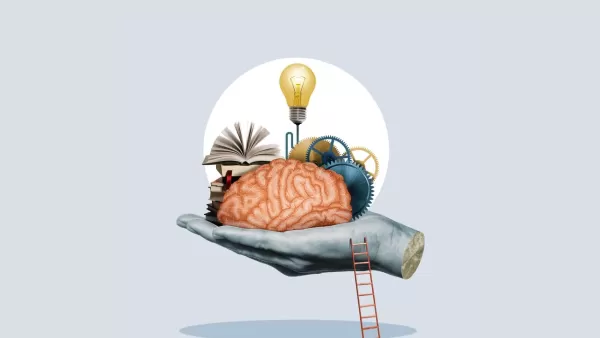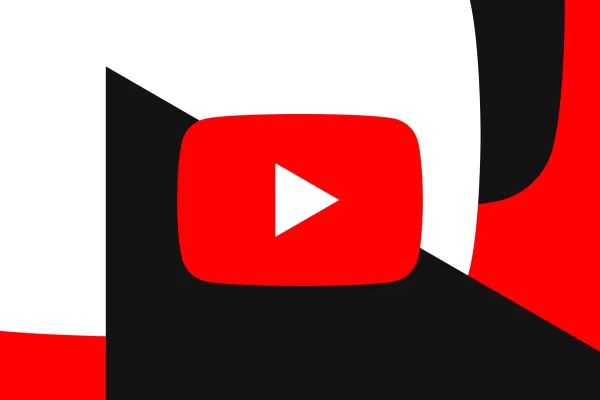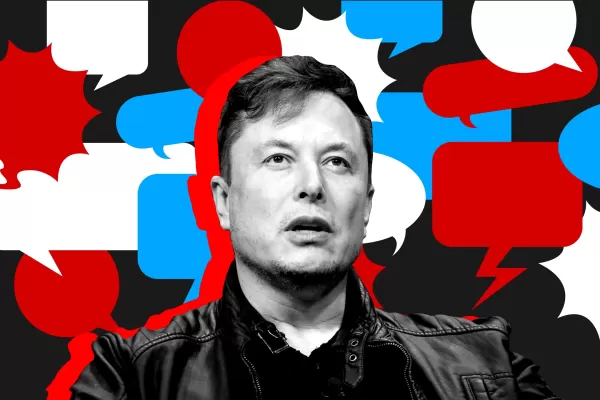Mouse Brain Studies Enhance Understanding of Human Minds

Google researchers have just unveiled an incredibly detailed map of the human brain, focusing on a tiny yet significant piece: just 1 cubic millimeter of brain tissue, roughly the size of half a grain of rice. This map, which required a staggering 1.4 petabytes of data to encode, showcases individual neurons and their intricate connections with remarkable clarity.
Even though it's a minuscule part of the brain, the map has led to some astonishing discoveries. "For instance, we noticed some of the neural wires twisting into these massive knots," says Google Research Scientist Viren Jain. "We're clueless about why this happens — it's something no one's seen before."
Now, Viren and his team are shifting their focus to the brains of mice, and for a compelling reason. These small mammals might just hold the key to unlocking some of the most profound mysteries of our own minds. Questions like: How do we store and retrieve memories? How do we recognize objects and faces? Why do we need so much sleep? And what malfunctions in conditions like Alzheimer's and other brain diseases?
"The main reason we lack answers to these questions is that we're still missing crucial data to study the brain," Viren explains.
The human brain, with its 86 billion neurons and over 100 trillion synapses, is the complex machinery behind our thoughts, emotions, movements, and interactions with the world. By mapping these neural connections, or the "connectome," we can gain insights into how our brains function and why they sometimes don't.
Creating detailed maps at the synaptic level is no small feat; it requires imaging the brain at nanometer resolution and handling enormous volumes of data. It's a technical challenge that demands continuous innovation in imaging, AI algorithms, and data management tools. That's why, a decade ago, Google Research established its Connectomics team.
Over the past ten years, the team has made significant strides in developing technologies to process, analyze, and share data more efficiently, significantly accelerating our understanding of the brain. For example, they introduced flood-filling networks, which automate the tracing of neurons across brain images using machine learning, eliminating the need for manual coloring. They also developed the SegCLR algorithm to automatically identify different parts of cells and cell types within these networks. Additionally, they created software like TensorStore and Neuroglancer to help store, process, and visualize large, multidimensional images and volumes.
However, mapping the entire human brain connectome remains a distant goal. It would require analyzing up to a zettabyte of data — one billion terabytes — which is currently beyond our technological reach. "Mapping the whole human brain right now would take billions of dollars and hundreds of years," Viren admits.
As a result, researchers are concentrating on either mapping larger portions of smaller animals' brains or smaller sections of larger animals' brains. In 2020, the Connectomics team successfully mapped half of a fruit fly's brain, uncovering connections among 25,000 neurons. Collaborations with other researchers have also led to the creation of connectomes for parts of the zebra finch and zebrafish larvae brains. And in May, the detailed map of 1 cubic millimeter of human brain tissue was published in Science.
The datasets from these projects have been used by thousands of researchers worldwide, leading to hundreds of published discoveries.
Researchers have constructed a 3D image of nearly every neuron and their connections within a small piece of human brain tissue. The top image shows excitatory neurons, lit up in yellow, while the bottom image displays inhibitory neurons, highlighted in blue.
The Connectomics team is currently collaborating with partners at Harvard, Princeton, and other institutions to map the mouse's hippocampus — the brain region responsible for memory formation, attention, and spatial navigation, comprising 2-3% of the entire mouse brain.
Without the means to map the entire human brain, analyzing a mouse connectome is a practical next step. It's small enough to be feasible and could yield insights applicable to human brains. "When you examine a mouse brain under an electron microscope, it looks remarkably similar to a human brain. It's essentially a miniature version," says Jeff W. Lichtman, a professor of molecular and cellular biology at Harvard. This is why mice are often used to study human brain disorders.
Mice represent the latest frontier in connectomics, but neuroscientists have been mapping increasingly complex brains for decades. The first connectome was of a worm's brain, published in 1986 after 16 years of work.
Even though a mouse brain is 1,000 times smaller than a human brain, mapping it remains a formidable technical challenge. The dataset from a single mouse brain connectome at nanometer resolution could be the largest biological dataset ever, estimated at 20,000-30,000 terabytes.
"Not only is acquiring the data a challenge, but storing and accurately processing it is another hurdle," Viren notes. "Our unique contribution has been developing tools that push the boundaries of accuracy and applying them to increasingly larger datasets."
If successful, the Connectomics team's mouse brain project will be the first time scientists have mapped part of a mammalian hippocampus and the largest brain section ever attempted to be mapped.
"Fundamental research is incredibly valuable," Viren concludes. "What excites me is the prospect of one day understanding precisely how memories are formed and what causes mental disorders or diseases. But to achieve this, we need to keep advancing technology in ways that would have been unimaginable just a couple of decades ago."
Related article
 YouTube Integrates Veo 3 AI Video Tool Directly Into Shorts Platform
YouTube Shorts to Feature Veo 3 AI Video Model This SummerYouTube CEO Neal Mohan revealed during his Cannes Lions keynote that the platform's cutting-edge Veo 3 AI video generation technology will debut on YouTube Shorts later this summer. This follo
YouTube Integrates Veo 3 AI Video Tool Directly Into Shorts Platform
YouTube Shorts to Feature Veo 3 AI Video Model This SummerYouTube CEO Neal Mohan revealed during his Cannes Lions keynote that the platform's cutting-edge Veo 3 AI video generation technology will debut on YouTube Shorts later this summer. This follo
 Google Cloud Powers Breakthroughs in Scientific Research and Discovery
The digital revolution is transforming scientific methodologies through unprecedented computational capabilities. Cutting-edge technologies now augment both theoretical frameworks and laboratory experiments, propelling breakthroughs across discipline
Google Cloud Powers Breakthroughs in Scientific Research and Discovery
The digital revolution is transforming scientific methodologies through unprecedented computational capabilities. Cutting-edge technologies now augment both theoretical frameworks and laboratory experiments, propelling breakthroughs across discipline
 Elon Musk's Grok AI Seeks Owner's Input Before Tackling Complex Queries
The recently released Grok AI—promoted by Elon Musk as a "maximally truth-seeking" system—has drawn attention for its tendency to consult Musk's public statements before responding to politically sensitive topics. Observers note that when addressing
Comments (18)
0/200
Elon Musk's Grok AI Seeks Owner's Input Before Tackling Complex Queries
The recently released Grok AI—promoted by Elon Musk as a "maximally truth-seeking" system—has drawn attention for its tendency to consult Musk's public statements before responding to politically sensitive topics. Observers note that when addressing
Comments (18)
0/200
![JoeLee]() JoeLee
JoeLee
 September 12, 2025 at 4:30:34 PM EDT
September 12, 2025 at 4:30:34 PM EDT
Qué locura de detalle en ese mapeo cerebral! 😵 Pero la pregunta es, ¿realmente necesitamos invertir tantos recursos en estudiar un trozo tan pequeño? Me preocupa que sirva más para patentar técnicas que para avances médicos reales. #prioridades


 0
0
![BruceMartínez]() BruceMartínez
BruceMartínez
 August 5, 2025 at 7:00:59 AM EDT
August 5, 2025 at 7:00:59 AM EDT
This brain map is mind-blowing! 🤯 Google’s dive into a rice-grain-sized chunk of brain tissue with 1.4 petabytes of data is wild. Makes me wonder how close we are to decoding thoughts or memories. Could this spark some sci-fi level AI? Exciting but a bit creepy too.


 0
0
![JoeGonzález]() JoeGonzález
JoeGonzález
 July 27, 2025 at 9:19:30 PM EDT
July 27, 2025 at 9:19:30 PM EDT
This brain map is wild! A tiny rice-grain-sized piece needs 1.4 petabytes? Imagine the storage for a whole brain! 😮 Makes me wonder if we’re close to decoding thoughts or just scratching the surface.


 0
0
![NicholasClark]() NicholasClark
NicholasClark
 April 24, 2025 at 1:33:42 AM EDT
April 24, 2025 at 1:33:42 AM EDT
この脳の地図は驚くべきものですね!私たちの思考の宇宙にズームインしているみたい。でも本当に1.4ペタバイト?信じられない!私のスマホでもこれを扱えるかしら😂 もしかしたら、人間の行動の秘密がここにあるかもしれないね、誰にもわからないよね?


 0
0
![PaulRoberts]() PaulRoberts
PaulRoberts
 April 23, 2025 at 8:48:43 PM EDT
April 23, 2025 at 8:48:43 PM EDT
Esse mapa do cérebro é incrível! É como se estivéssemos ampliando o universo dos nossos pensamentos. Mas sério, 1,4 petabytes? Isso é loucura! Me pergunto se meu celular conseguiria lidar com isso 😂 Talvez eles encontrem o segredo do comportamento humano aí dentro, quem sabe?


 0
0
![BenGarcía]() BenGarcía
BenGarcía
 April 23, 2025 at 3:48:14 PM EDT
April 23, 2025 at 3:48:14 PM EDT
This mouse brain study is absolutely fascinating! It's incredible how much we can learn about the human mind through such small samples. I wonder what they'll discover next. Maybe we'll finally understand why we procrastinate so much. 😅🧠


 0
0

Google researchers have just unveiled an incredibly detailed map of the human brain, focusing on a tiny yet significant piece: just 1 cubic millimeter of brain tissue, roughly the size of half a grain of rice. This map, which required a staggering 1.4 petabytes of data to encode, showcases individual neurons and their intricate connections with remarkable clarity.
Even though it's a minuscule part of the brain, the map has led to some astonishing discoveries. "For instance, we noticed some of the neural wires twisting into these massive knots," says Google Research Scientist Viren Jain. "We're clueless about why this happens — it's something no one's seen before."
Now, Viren and his team are shifting their focus to the brains of mice, and for a compelling reason. These small mammals might just hold the key to unlocking some of the most profound mysteries of our own minds. Questions like: How do we store and retrieve memories? How do we recognize objects and faces? Why do we need so much sleep? And what malfunctions in conditions like Alzheimer's and other brain diseases?
"The main reason we lack answers to these questions is that we're still missing crucial data to study the brain," Viren explains.
The human brain, with its 86 billion neurons and over 100 trillion synapses, is the complex machinery behind our thoughts, emotions, movements, and interactions with the world. By mapping these neural connections, or the "connectome," we can gain insights into how our brains function and why they sometimes don't.
Creating detailed maps at the synaptic level is no small feat; it requires imaging the brain at nanometer resolution and handling enormous volumes of data. It's a technical challenge that demands continuous innovation in imaging, AI algorithms, and data management tools. That's why, a decade ago, Google Research established its Connectomics team.
Over the past ten years, the team has made significant strides in developing technologies to process, analyze, and share data more efficiently, significantly accelerating our understanding of the brain. For example, they introduced flood-filling networks, which automate the tracing of neurons across brain images using machine learning, eliminating the need for manual coloring. They also developed the SegCLR algorithm to automatically identify different parts of cells and cell types within these networks. Additionally, they created software like TensorStore and Neuroglancer to help store, process, and visualize large, multidimensional images and volumes.
However, mapping the entire human brain connectome remains a distant goal. It would require analyzing up to a zettabyte of data — one billion terabytes — which is currently beyond our technological reach. "Mapping the whole human brain right now would take billions of dollars and hundreds of years," Viren admits.
As a result, researchers are concentrating on either mapping larger portions of smaller animals' brains or smaller sections of larger animals' brains. In 2020, the Connectomics team successfully mapped half of a fruit fly's brain, uncovering connections among 25,000 neurons. Collaborations with other researchers have also led to the creation of connectomes for parts of the zebra finch and zebrafish larvae brains. And in May, the detailed map of 1 cubic millimeter of human brain tissue was published in Science.
The datasets from these projects have been used by thousands of researchers worldwide, leading to hundreds of published discoveries.
Researchers have constructed a 3D image of nearly every neuron and their connections within a small piece of human brain tissue. The top image shows excitatory neurons, lit up in yellow, while the bottom image displays inhibitory neurons, highlighted in blue.
The Connectomics team is currently collaborating with partners at Harvard, Princeton, and other institutions to map the mouse's hippocampus — the brain region responsible for memory formation, attention, and spatial navigation, comprising 2-3% of the entire mouse brain.
Without the means to map the entire human brain, analyzing a mouse connectome is a practical next step. It's small enough to be feasible and could yield insights applicable to human brains. "When you examine a mouse brain under an electron microscope, it looks remarkably similar to a human brain. It's essentially a miniature version," says Jeff W. Lichtman, a professor of molecular and cellular biology at Harvard. This is why mice are often used to study human brain disorders.
Mice represent the latest frontier in connectomics, but neuroscientists have been mapping increasingly complex brains for decades. The first connectome was of a worm's brain, published in 1986 after 16 years of work.
Even though a mouse brain is 1,000 times smaller than a human brain, mapping it remains a formidable technical challenge. The dataset from a single mouse brain connectome at nanometer resolution could be the largest biological dataset ever, estimated at 20,000-30,000 terabytes.
"Not only is acquiring the data a challenge, but storing and accurately processing it is another hurdle," Viren notes. "Our unique contribution has been developing tools that push the boundaries of accuracy and applying them to increasingly larger datasets."
If successful, the Connectomics team's mouse brain project will be the first time scientists have mapped part of a mammalian hippocampus and the largest brain section ever attempted to be mapped.
"Fundamental research is incredibly valuable," Viren concludes. "What excites me is the prospect of one day understanding precisely how memories are formed and what causes mental disorders or diseases. But to achieve this, we need to keep advancing technology in ways that would have been unimaginable just a couple of decades ago."
 YouTube Integrates Veo 3 AI Video Tool Directly Into Shorts Platform
YouTube Shorts to Feature Veo 3 AI Video Model This SummerYouTube CEO Neal Mohan revealed during his Cannes Lions keynote that the platform's cutting-edge Veo 3 AI video generation technology will debut on YouTube Shorts later this summer. This follo
YouTube Integrates Veo 3 AI Video Tool Directly Into Shorts Platform
YouTube Shorts to Feature Veo 3 AI Video Model This SummerYouTube CEO Neal Mohan revealed during his Cannes Lions keynote that the platform's cutting-edge Veo 3 AI video generation technology will debut on YouTube Shorts later this summer. This follo
 Google Cloud Powers Breakthroughs in Scientific Research and Discovery
The digital revolution is transforming scientific methodologies through unprecedented computational capabilities. Cutting-edge technologies now augment both theoretical frameworks and laboratory experiments, propelling breakthroughs across discipline
Google Cloud Powers Breakthroughs in Scientific Research and Discovery
The digital revolution is transforming scientific methodologies through unprecedented computational capabilities. Cutting-edge technologies now augment both theoretical frameworks and laboratory experiments, propelling breakthroughs across discipline
 Elon Musk's Grok AI Seeks Owner's Input Before Tackling Complex Queries
The recently released Grok AI—promoted by Elon Musk as a "maximally truth-seeking" system—has drawn attention for its tendency to consult Musk's public statements before responding to politically sensitive topics. Observers note that when addressing
Elon Musk's Grok AI Seeks Owner's Input Before Tackling Complex Queries
The recently released Grok AI—promoted by Elon Musk as a "maximally truth-seeking" system—has drawn attention for its tendency to consult Musk's public statements before responding to politically sensitive topics. Observers note that when addressing
 September 12, 2025 at 4:30:34 PM EDT
September 12, 2025 at 4:30:34 PM EDT
Qué locura de detalle en ese mapeo cerebral! 😵 Pero la pregunta es, ¿realmente necesitamos invertir tantos recursos en estudiar un trozo tan pequeño? Me preocupa que sirva más para patentar técnicas que para avances médicos reales. #prioridades


 0
0
 August 5, 2025 at 7:00:59 AM EDT
August 5, 2025 at 7:00:59 AM EDT
This brain map is mind-blowing! 🤯 Google’s dive into a rice-grain-sized chunk of brain tissue with 1.4 petabytes of data is wild. Makes me wonder how close we are to decoding thoughts or memories. Could this spark some sci-fi level AI? Exciting but a bit creepy too.


 0
0
 July 27, 2025 at 9:19:30 PM EDT
July 27, 2025 at 9:19:30 PM EDT
This brain map is wild! A tiny rice-grain-sized piece needs 1.4 petabytes? Imagine the storage for a whole brain! 😮 Makes me wonder if we’re close to decoding thoughts or just scratching the surface.


 0
0
 April 24, 2025 at 1:33:42 AM EDT
April 24, 2025 at 1:33:42 AM EDT
この脳の地図は驚くべきものですね!私たちの思考の宇宙にズームインしているみたい。でも本当に1.4ペタバイト?信じられない!私のスマホでもこれを扱えるかしら😂 もしかしたら、人間の行動の秘密がここにあるかもしれないね、誰にもわからないよね?


 0
0
 April 23, 2025 at 8:48:43 PM EDT
April 23, 2025 at 8:48:43 PM EDT
Esse mapa do cérebro é incrível! É como se estivéssemos ampliando o universo dos nossos pensamentos. Mas sério, 1,4 petabytes? Isso é loucura! Me pergunto se meu celular conseguiria lidar com isso 😂 Talvez eles encontrem o segredo do comportamento humano aí dentro, quem sabe?


 0
0
 April 23, 2025 at 3:48:14 PM EDT
April 23, 2025 at 3:48:14 PM EDT
This mouse brain study is absolutely fascinating! It's incredible how much we can learn about the human mind through such small samples. I wonder what they'll discover next. Maybe we'll finally understand why we procrastinate so much. 😅🧠


 0
0





























